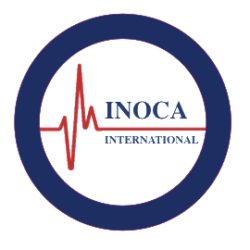
Abbreviations
“Microvascular Dysfunction and Coronary Vasospasm are now clearly recognised entities within the updated ESC guidelines. We recognise that this is a major and significant problem”
Dr Ranil De Silva
You may see/hear these words used on our website. Please click on the abbreviation to be linked to a reputable source. If there is an abbreviation you would like us to add to the list, please get in touch via the ‘Contact Us‘ page
A
A&E
Accident and Emergency Department (UK)
ACTH
Angiogram – angiogram using Acetylcholine
AF – ATRIAL FIBRILLATION
A fast, disorganised heart rhythm that starts in the atria
ANOCA
Angina with non obstructed Coronary Arteries
B
BB
Betablocker
BP
Blood Pressure
BPM
Beats per Minute
BRADYCARDIA
A slow heart rate commonly defined s under 60 beats per minute.
G
G – I
GP
General Practitioner
GTN
Glyceryl Trinitrate
HFpEF
Heart Failure with Preserved Ejection Fraction
Holter Monitoring
Continuous recording of electrocardiographic (ECG) signals, usually over 24 hours.
HR
Heart Rate
INOCA
Ischaemia with non obstructed Coronary Arteries
ISCHAEMIA
Insufficient blood flow to tissue due to blockage or problems in the blood flow through the arteries
J
J – L
M
M – N
MACE
Major Adverse Cardiovascular Event
MAU
Medical Assessment Unit
MCAS
Mast Cells Activation Syndrome
MI
Myocardial Infarction
MINOCA
Myocardial Infarction with non obstructive coronary arteries
MVA
Microvascular Angina
MOM
The INOCA International Meeting of Minds held at The Dorchester, London
NOCAD
Non obstructive Coronary Artery Disease
NSTEMI
Non ST Elevation Myocardial Infarction
O
O – Z
PA
Prinzmetal’s Angina
PCI
Percutaneous Coronary Intervention
SL
Sublingual
SOB
Shortness of Breath
STEMI
ST Elevation Myocardial Infarction
SYNCOPE
Fainting, loss of consciousness or dizziness which may be due to a change in cardiac rhythm (arrhythmia) or other causes.
TACHYCARDIA
Rapid beating of either or both chambers of the heart, usually defined as a rate over 100 beats per minute
TROP T
Troponin Test



